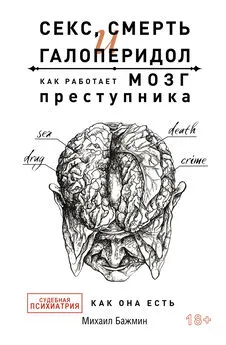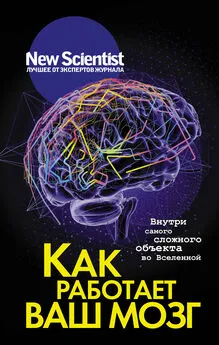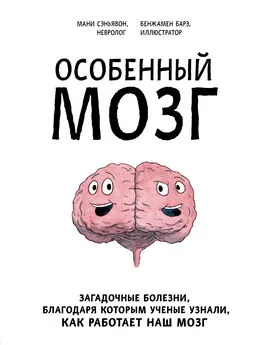Ричард Тейлор - Разум убийцы. Как работает мозг тех, кто совершает преступления
- Название:Разум убийцы. Как работает мозг тех, кто совершает преступления
- Автор:
- Жанр:
- Издательство:Литагент 5 редакция «БОМБОРА» (БЕЗ ПОДПИСКИ)
- Год:2021
- Город:М.
- ISBN:978-5-04-157343-0
- Рейтинг:
- Избранное:Добавить в избранное
-
Отзывы:
-
Ваша оценка:
Ричард Тейлор - Разум убийцы. Как работает мозг тех, кто совершает преступления краткое содержание
Разум убийцы. Как работает мозг тех, кто совершает преступления - читать онлайн бесплатно ознакомительный отрывок
Интервал:
Закладка:
Я также благодарю своих однокурсников и преподавателей из Института криминологии, Кембриджского университета и с курса «Прикладная криминология и пенология», особенно Элисон Либлинг, Бена Крю, Лорейн Гельсторп, Кэтрин Мюллер-Джонсон, Люси Уилмотт, Глена Карнера, Эми Ладлоу, Нитина Рамеша и Педро Босси.
Я благодарен всем своим нынешним и бывшим коллегам из Службы столичной полиции, особенно Киту Гилсу, который помог мне стать научным консультантом книги The Critical Few, Ричарду Уолтону, пригласившему меня в оригинальную рабочую группу Междисциплинарного соглашения о защите общественности, и всем сотрудникам Центра оценки угрозы.
Спасибо всем адвокатам, с которыми я работал, за полезные рекомендации, но не за перекрестные допросы. Я прошу прощения за сорванные сроки.
Спасибо Карен Лок, Шарлотте Уолтон, Кристин Ревелл, Лорейн Миллен, Клэр Уэллс, Марни Пиллоу, Анил Тапен, Донне Морган и Энн Гадсен за административную поддержку и помощь в наборе текста. Я также благодарю сотрудников Британской библиотеки и отдела скандинавских языков библиотеки Университетского колледжа Лондона.
Наконец, спасибо всем членам моей семьи, чьи поддержка и понимание сделали все это возможным.
Об авторе
Доктор Ричард Тейлор родился в Сингапуре и вырос на юге Англии. Он получил медицинское образование в Университетском колледже Лондона. Его вдохновили заниматься психиатрией, а затем и судебной психиатрией пациенты с ножевыми ранениями, которых он лечил в отделении неотложной помощи, будучи младшим врачом. Спустя долгое время после того, как смертельно опасные раны зажили, он задумался о том, что побудило нападавшего пойти на преступление. Кто кого атаковал и с какой целью?
Ричард Тейлор работал в Бетлемской королевской больнице и клинике Модсли, а затем занял пост судебного психиатра-консультанта. Он имеет большой опыт анализа всех типов преступлений, включая изнасилования, поджоги, серьезное насилие, убийства, создание заговоров и производство оружия массового поражения. За 30 лет в судебной психиатрии врач работал более чем со 100 делами об убийствах в качестве как эксперта-свидетеля, так и лечащего судебного психиатра.
Список использованной литературы
1. Douglas, J.E., Burgess, A.W., Burgess, A.G. and Ressler, R.K., 2013. Crime Classification Manual: A Standard System for Investigating and Classifying Violent Crime, John Wiley & Sons.
2. Canter, D.V., Alison, L.J., Alison, E. and Wentink, N., 2004. ‘The organized/disorganized typology of serial murder: Myth or model?’. Psychology, Public Policy, and Law, 10(3), p. 293.
3. Schlesinger, L.B., 2003. Sexual murder: Catathymic and compulsive homicides. CRC Press.
4. Yakeley, J. and Wood, H., 2014. ‘Paraphilias and paraphilic disorders: Diagnosis, assessment and management’. Advances in Psychiatric treatment, 20(3), pp. 202–213.
5. Dietz, P.E., Hazelwood, R.R. and Warren, J., 1990. ‘The sexually sadistic criminal and his offenses’. Journal of the American Academy of Psychiatry and the Law, 18(2), pp. 163–178.
6. MacCulloch, M.J., Snowden, P.R., Wood, P.J.W. and Mills, H.E., 1983. ‘Sadistic fantasy, sadistic behaviour and offending’. The British Journal of Psychiatry, 143(1), pp. 20–29.
7. Revitch, E., 1965. ‘Sex murder and sex aggression.’ Journal of the Medical Society of New Jersey, 54, pp. 519–524.
8. Meloy, J.R., 1988. The Psychopathic mind: origins, dynamics, and treatment. Rowman & Littlefield.
9. Meloy, J.R. and Hoffmann, J. eds., 2013. International handbook of Threat Assessment. Oxford University Press.
10. Meloy, J.R., 2000. ‘The nature and dynamics of sexual homicide: an integrative review’, Aggression and Violent Behavior, 5:1–22.
11. Blais, J., Forth, A.E. and Hare, R.D., 2017. ‘Examining the interrater reliability of the Hare Psychopathy Checklist – Revised across a large sample of trained raters’. Psychological Assessment, 29(6), p. 762.
12. Blair, R.J.R., 2003. ‘Neurobiological basis of psychopathy’. The British Journal of Psychiatry, 182(1), pp. 5–7.
13. Marshall, J., Watts, A.L. and Lilienfeld, S.O., 2018. ‘Do psychopathic individuals possess a misaligned moral compass? A meta-analytic examination of psychopathy’s relations with moral judgment’. Personality Disorders: Theory, Research, and Treatment, 9(1), p. 40.
14. Taylor, P.J. and Gunn, J., 2008. ‘Diagnosis, medical models and formulations’. Handbook of Forensic Mental Health, pp. 227–243.
15. Meloy, J.R., 2006. ‘Empirical basis and forensic application of affective and predatory violence’. Australian and New Zealand Journal of Psychiatry, 40(6–7), pp. 539–547.
16. Larsson, H., Viding, E. and Plomin, R., 2008. ‘Callous – unemotional traits and antisocial behavior: Genetic, environmental, and early parenting characteristics’, Criminal Justice and Behavior, 35(2), pp. 197–211.
17. Kolla, N.J., Malcolm, C., Attard, S., Arenovich, T., Blackwood, N. and Hodgins, S., 2013. ‘Childhood maltreatment and aggressive behaviour in violent offenders with psychopathy’. The Canadian Journal of Psychiatry, 58(9), pp. 487–494.
18. Taylor, R. and Yakeley, J., 2019. ‘Working with MAPPA: ethics and pragmatics’, BJPsych Advances, 25(3), pp. 157–165.
19. Blair, R.J.R., 1997. ‘Moral reasoning and the child with psychopathic tendencies’, Personality and Individual Differences, 22(5), pp. 731–739.
20. Eastman, N., 1995. ‘Assessing for psychiatric injury and ‘nervous shock’.’ Advances in Psychiatric Treatment, 1(6), pp. 154–160.
21. Bunclark, J. and Crowe, M., 2000. ‘Repeated self-injury and its management’. International Review of Psychiatry, 12(1), pp. 48–53.
22. Fazel, S., Gulati, G., Linsell, L., Geddes, J.R., Grann, M., 2009. ‘Schizophrenia and violence: Systematic review and meta-analysis’, PLoS Med 6(8): e1000120. doi:10.1371/journal.pmed.1000120.
23. Wilson, S., Farnham, F., Taylor, A. and Taylor, R., 2019. ‘Reflections on working in public-figure threat management’, Medicine, Science and the Law, 59(4), pp. 275–281.
24. Schug, R.A., 2011. ‘Schizophrenia and matricide: An integrative review’, Journal of Contemporary Criminal Justice, 27(2), pp. 204–229.
25. Welldon, E.V., 2018. Mother, Madonna, Whore: The Idealization and Denigration of Motherhood, Routledge.
26. Friedman, S.H., Cavney, J. and Resnick, P.J., 2012. ‘Mothers who kill: evolutionary underpinnings and infanticide law’, Behavioral Sciences & the Law, 30(5), pp. 585–597.
27. Mullen, P.E. and Pathé, M., 1994. ‘The pathological extensions of love’, The British Journal of Psychiatry, 165(5), pp. 614–623.
28. Mullen, P.E. and Maack, L.H., 1985. ‘Jealousy, pathological jealousy and aggression’. in Farrington, D., Gunn, J. Aggression and Dangerousness, pp. 103–126.
29. Mullen, P.E., Purcell, R. and Stuart, G.W., 1999. ‘Study of stalkers’. American Journal of Psychiatry, 156(8), pp. 1244–1249.
30. Mullen, P. E., Pathé, M. and Purcell, R., 2008. Stalkers and their Victims. 2nd edn. Cambridge University Press.
31. Farnham, F.R., James, D.V. and Cantrell, P., 2000. ‘Association between violence, psychosis, and relationship to victim in stalkers’, The Lancet, 355(9199), p. 199.
32. Purcell, R., Pathé, M. and Mullen, P., 2004. ‘When do repeated intrusions become stalking?’, Journal of Forensic Psychiatry & Psychology, 15(4), pp. 571–583.
33. McEwan, T.E., Mullen, P.E., MacKenzie, R.D. and Ogloff, J.R., 2009. ‘Violence in stalking situations’, Psychological Medicine, 39(9), pp. 1469–1478.
34. Schlesinger, L.B., Gardenier, A., Jarvis, J. and Sheehan-Cook, J., 2014. ‘Crime scene staging in homicide’. Journal of police and criminal psychology, 29(1), pp. 44–51.
35. Gelsthorpe, L., 2004. ‘Female offending. A Theoretical Overview’. In I G. McIvor (ed.), Women Who Offend, pp. 13–37.
36. Birmingham, L., Gray, J., Mason, D. and Grubin, D., 2000. ‘Mental illness at reception into prison’. Criminal Behaviour and Mental Health, 10(2), pp. 77–87.
37. Liebling, A., 2011. ‘Moral performance, inhuman and degrading treatment and prison pain’. Punishment & Society, 13(5), pp. 530–550.
38. Chao, O. and Taylor, R., 2005. ‘Female offenders at HMP Holloway needing hospital transfer: An examination of failure to achieve hospital admission and associated factors’, International Journal of Prisoner Health, 1(2/3/4), pp. 241–247.
39. Browne, A., 2008. When Battered Women kill. Simon and Schuster.
40. Mezey, G., (2004). ‘Battered women who kill’. [Conference presentation]: Women as Victims and Perpetrators of Violence. Queens College Cambridge, September 2004.
41. Smith, R., 1997. ‘Don’t treat shackled patients’, BMJ: British Medical Journal, 314(7075), p. 164.
42. Bateman, A. and Fonagy, P., 2016. Mentalization-Based Treatment for Personality Disorders: A practical guide. Oxford University Press.
43. Grosz, S., 2013 The Examined Life: How we lose and find ourseleves, Random House.
44. Downs, D.A., 1996. More Than Victims: Battered Women, the Syndrome Society, and the Law, University of Chicago Press.
45. McHam, S.B., 2001. ‘Donatello’s bronze David and Judith as metaphors of Medici rule in Florence’. The Art Bulletin, 83(1), pp. 32–47.
46. Parker, L., 1992. ‘Pure Woman and Tragic Heroine? Conflicting Myths in Hardy’s Tess of the D’Urbervilles’. Studies in the Novel, 24(3), pp. 273–281.
47. Gudjonsson, G. H. and MacKeith, J. A. C. (1988)’Retracted Confessions: Legal, Psychological and Psychiatric Aspects’, Medicine, Science and the Law, 28(3), pp. 187–194.
48. Taylor, R., Yakeley, J., ‘Women in prison’ book chapter in Psychiatry in Prisons: a Comprehensive Handbook (Vol. 31), Cumming, I., Wilson, S. (eds), pp. 86–97: Jessica Kingsley, London.
49. Jelicic, M., 2018. ‘Testing claims of crime-related amnesia’, Frontiers in Psychiatry, 9, p. 617.
Читать дальшеИнтервал:
Закладка:
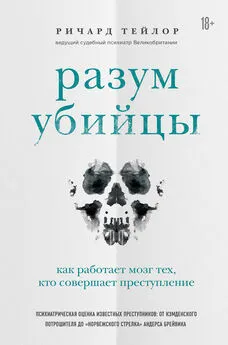
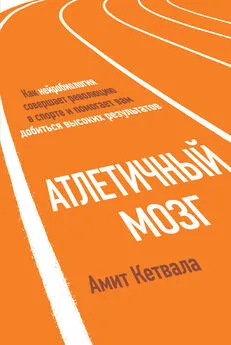
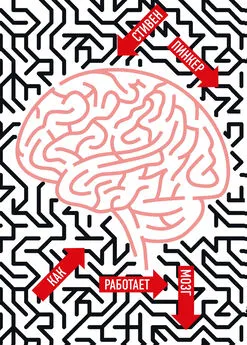
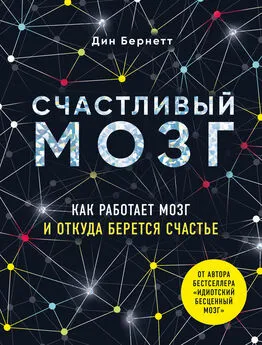

![Амит Кетвала - Атлетичный мозг [Как нейробиология совершает революцию в спорте и помогает вам добиться высоких результатов]](/books/1101771/amit-ketvala-atletichnyj-mozg-kak-nejrobiologiya-so.webp)

